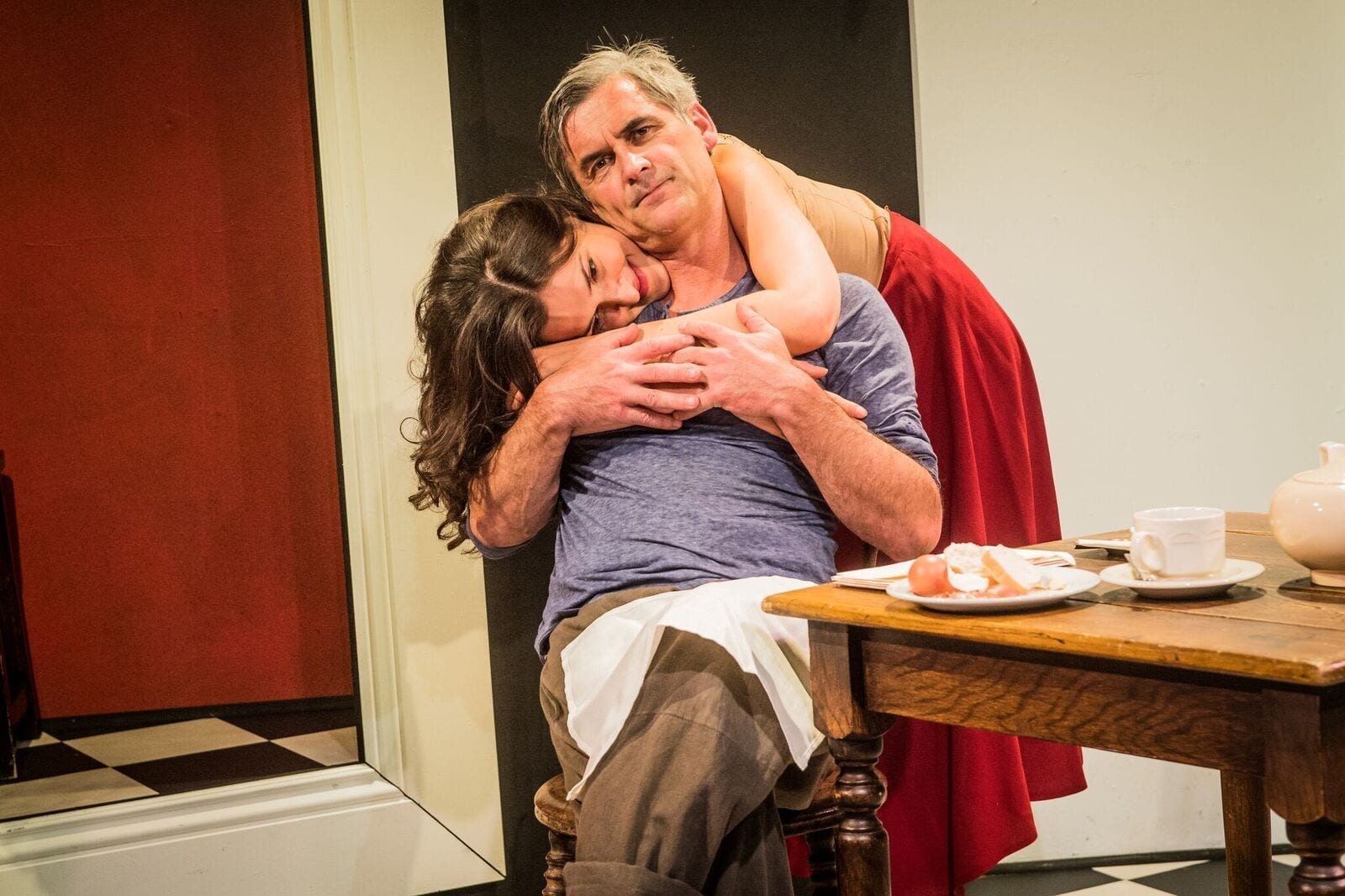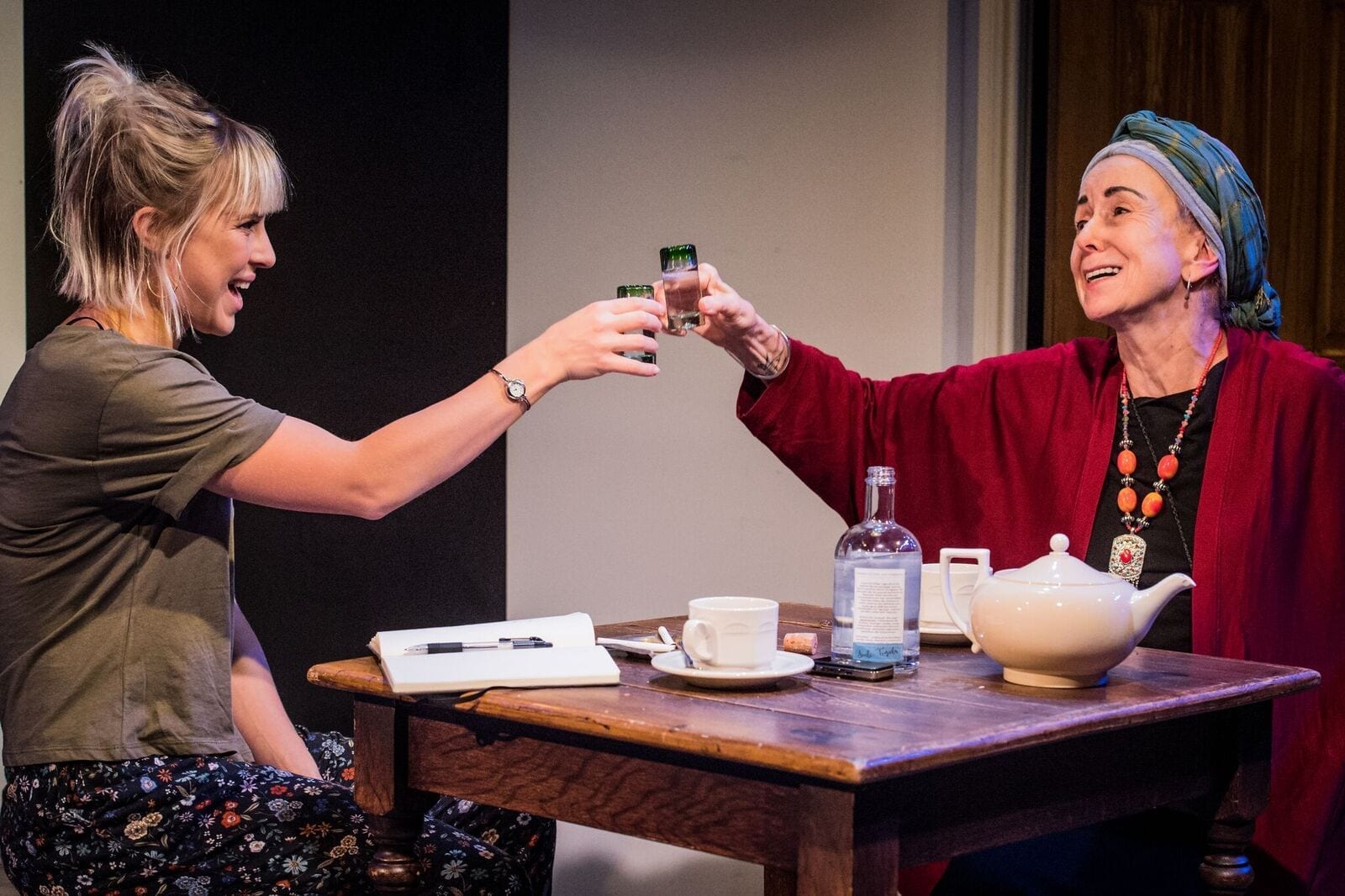This fascinating play about the artist Leonora Carrington is the result – so the writer tells us – of a visit to an exhibition of Carrington’s work at the Tate Liverpool. It is notoriously difficult to capture the lives of visual artists in drama and Allemano has wisely chosen not to attempt a ‘biopic’ approach. Instead she portrays her subject at two moments of her life – in France at the height of her affair with surrealist painter Max Ernst, and in Mexico near the end of her life as she meets with a young journalist seeking an interview. From these two moments Allemano presents an engrossing picture of a woman brave enough to abandon the conventions of her times and to follow her own rebellious instincts in the pursuit of her own creative voice.

The heart of the play is a conversation between the older Leonora and a young journalist who has travelled from London and away from her job “reviewing mascara” to try to get an interview with the reclusive artist. The conversation that ensues is partly about the unfocussed ambitions of the young woman but more significantly about the fulcrum moment of Leonora’s life – in France just before the Second World War – as she struggles with her love for Ernst and her determination to find her own voice. Leonora turns the tables and ‘interviews’ the young woman and we learn about her own artistic and personal journey both through her own words and through a series of ‘flashback scenes’ as the young Leonora and her lover Max Ernst are conjured up in the setting of their home in pre-war France. The parallels and contrasts between the elderly Leonora, her younger self, and the struggling young journalist are what drives the drama in this fascinating play.
The play is illuminated by four fine performances. Susan Tracy as the older Leonora cultivates a waspish exterior with some superb ‘arched eyebrow’ moments. She balances this by radiating a warm concern for the lost young journalist, and the moments when she does begin to reflect on the cauldron of love and conflict that shaped her younger self are spellbinding. And as her younger self, Phoebe Pryce perfectly captures the bolshie determination that must have inspired the Lancashire schoolgirl to abandon a privileged upbringing to embrace Surrealism – and one of its masters Max Ernst. But “I was nobody’s muse” she says and as their sense of foreboding about the future grows, Pryce brilliantly portrays Leonora’s struggle to emerge from beneath his considerable shadow and make her own art. Eleanor Wyld plays Eliza Prentice, the young journalist from Hackney so well that at times it really does feel as if two cultures are colliding. But the parallels between the struggles of the young Leonora and the young Eliza emerge in the light of the older woman’s comments and help to underline the sharp relevance of the story being told. The role of Ernst is perhaps the least well written of the four, but Nigel Whitmey’s is a sympathetic portrayal of an artist who seems at this moment in his life to be able to reconcile his own creative urges with his love for this inspiring young woman.

The set has a surrealist flavour – on one side of the stage is a realistic kitchen and, on the other, a huge empty frame as if waiting for an enormous painting. In this frame there are sometimes real scenes and sometimes very striking dream moments that refer to the artistic works of Ernst and Carrington. Director Michael Oakley finds a totally convincing way to combine the two sets of scenes and unite reality and dream so as to enhance the story-telling. Allemano is a new voice that I hope we hear loud and often.

